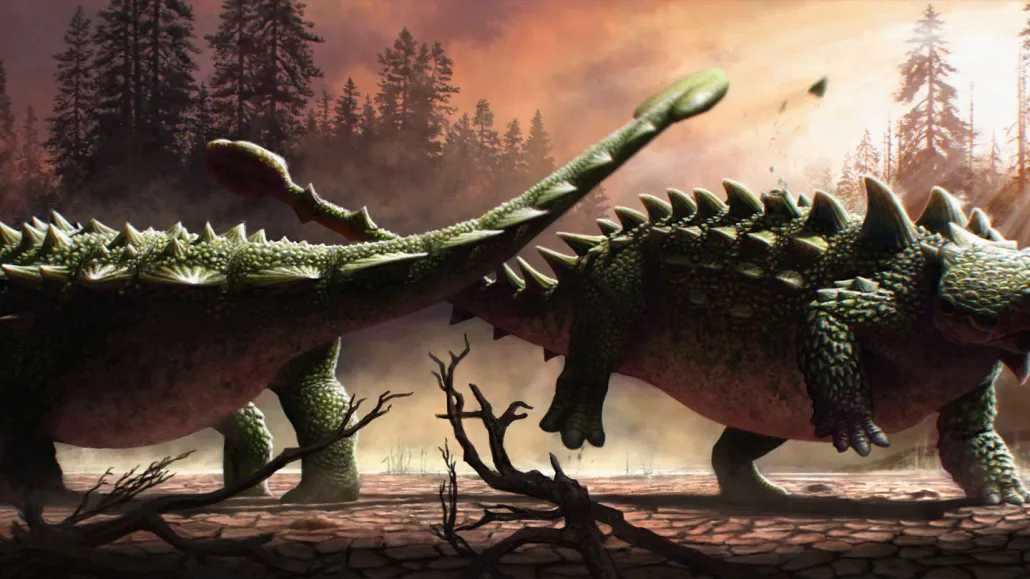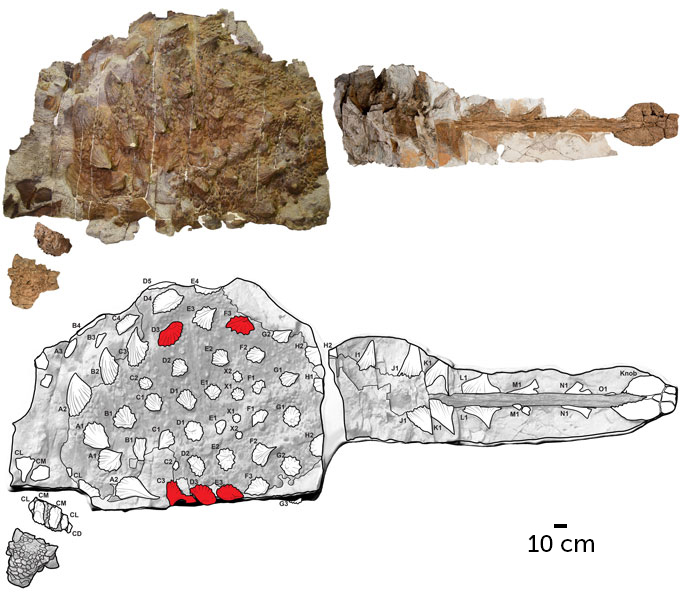Armored dinos may have used their tail clubs to bludgeon each other
Broken spikes on a fossil dinosaur’s flanks point to sparring rather than tyrannosaur bites

Zuul crurivastator (illustrated) and other armored dinosaurs may have battled for social dominance using their bony tail clubs.
© Henry Sharpe








